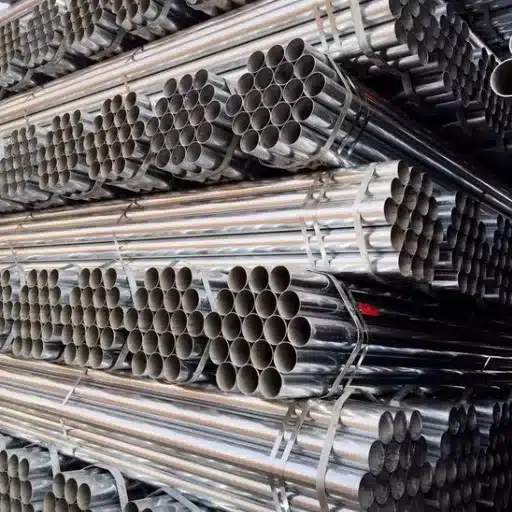Offering skilled flow control solutions for liquids, gases, or even certain solids, butterfly valves have their place in industrial, commercial, and residential systems. These valves compactly and efficiently treat water, oil, and gas. However, every mechanical device with benefits has downsides as well. Whether these valves correspond with your expectations is something we hope to answer in this article. After benefiting from the leaps in technology geared toward the oil and gas industry, they have only increased in popularity. You will see how understanding their key functions can lead to more reliable and optimized performance in systems developed. If you’re looking for practical limitations and advantages on their functionality, you might want to stay put till the end.
What Are the Key Advantages of Using Butterfly Valves?
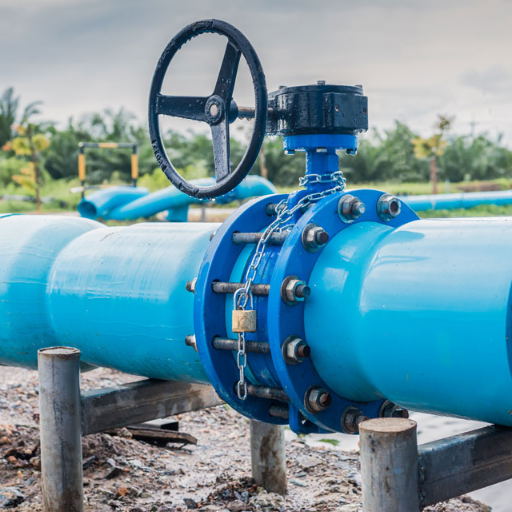
The butterfly valve has many attributes that make it popular with industries and businesses alike. First, it is easy to install because of its small size and light weight, requiring less structural support. Second, the simple design reduces cost, both in terms of maintenance and spending money in the beginning. Additionally, these valves enable fast and reliable operation, making them useful for applications that require frequent opening and closing. Their seal also minimizes the possibility of leakage, which helps system efficiency. Last but not least, these valves are versatile because they can withstand a range of media, be it liquid, gas, or slurry, and different temperatures and pressure levels.
Quick Operation Through Quarter-Turn Mechanism
The butterfly valve’s quarter-turn mechanism enables both rapid and efficient operation because only 90 degrees of rotation on the actuator is needed to place the valve from a fully closed to a fully opened position or vice versa. Modern improvements in valve design have further advanced optimization by reducing the required actuation torque, thus allowing smoother operation even in higher pressure scenarios. For example, some research claims that state-of-the-art quarter-turn valves with a power-controlled actuator maintains proper sealing (no leakage) at pressures above 300 PSI. These valves are also constructed to reduce operational wear, prolonging the functional lifespan of the valve and needing infrequent maintenance ceycles. Moreover, some models feature an automated actuator that improves responsiveness and increases the control precision of the system, further enhancing system performance.
Space and Weight Efficiency in Pipeline Systems
Below are some of the most crucial points in achieving space and weight efficiency in pipeline systems: using lightweight materials and valve designs also makes the pipeline systems compact. This particular optimization is crucial when physical limitations, mobility, or range of motion are of primary concern, such as in aerospace or offshore platforms. The use of advanced manufacturing processes makes it possible to use aluminum alloys, or reinforced polymers while achieving high performance which reduces overall system footprint.
Cost-effectiveness Compared to Ball and Gate Valves
The widespread application of ball and gate valves in the industrial world has not made them cost-effective when compared to other types of valves like butterfly valves, which depend on specific operational requirements. After the industrial application, the cost-effectiveness is validated with the relatively lower initial cost of butterfly valves, given that they possess a simpler design and require fewer components and a lower volume of non-compliant materials. Additionally, lesser construction material lowers installation labor costs which is a boon in large-diameter piping systems.
An analysis of the installation and maintenance cost associated with butterfly, ball, and gate valves illustrates that butterfly valves achieve approximately 40% savings over ball and gate valves when used in applications that do not require high-pressure sealing. In addition, they incur lower maintenance expenses because the design of butterfly valves mitigates damage to internal parts. The simple design of these valves also results in lower flow restriction which improves energy efficiency of fluid control systems, streamlining the operating costs in the long run. Considering the cost efficiency, especially for massive or financially constrained undertakings, butterfly valves stand out as an effective and budget-friendly solution.
What Disadvantages of Butterfly Valves Should You Consider?
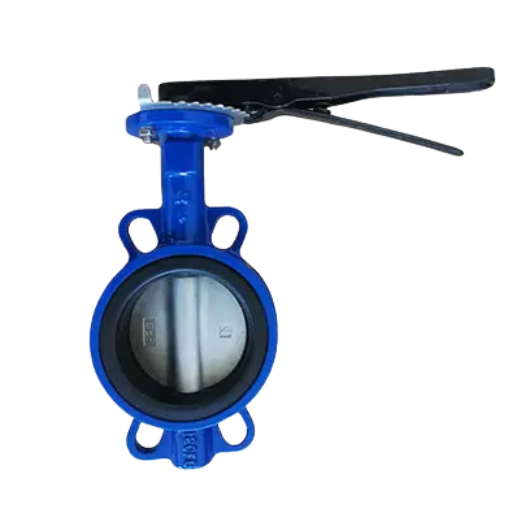
Though butterfly valves are advantageous, they come with downsides that must be considered. For instance, control might not be as precise in comparison to other types of valves like globe valves in situations that demand minimal leakage or highly controlled flow regulation. Moreover, in certain critical high-purity or sensitive operations, the open disc configuration presents an issue since it stays in the path of flow, resulting in obstruction discharge, which poses some pressure loss. Furthermore, the sealing components of butterfly valves are more prone to wear in high pressure or temperature situations which is a concern for reliability in comparison to other stronger valve designs.
Pressure Loss Caused by the Valve
For system design and evaluation in fluid systems, pressure loss due to valves is one of the key aspects to take into account. For a given setup, it can be defined as the difference in pressure of the fluid as it goes through the valve and is dependent on a host of other factors such as the type, design, size, flow rate, and properties of the fluid. This pressure drop is a measured value which can be calculated from the flow coefficient of the valve, Cv or the discharge coefficient, Kd which is an indicator of the effectiveness of flow discharge from the valve.
Research shows that butterfly valves exhibit a moderate pressure drop compared to ball valves, which have relatively lower pressure drops due to clear flow paths. For example, a butterfly valve with a Cv of 150 may have a pressure drop of around 10 psi at a flow rate of 500 GPM with the rest of the conditions being standard, considering the fluid’s density and temperature. On the other hand, other valves, like globe and needle valves, tend to have significantly higher pressure drops due to their flow-restricting design.
Measuring and calculating pressure drop is critical, particularly in systems that need tight control, like chemical processing and HVAC systems or high-pressure pipelines. Higher pressure drops can result in increased energy use because of the added pumping power needed, while low pressure drops may signal a system lacking efficiency. For various valve configurations, CFD simulations, along with real-world tests, are often used to predict and validate pressure drops, thus ensuring the system is operating optimally.
Seal Wear and Maintenance Issues
The swear and maintenance are issues that spell trouble to me, considering operating conditions, material, lubrication, etc. From my perspective, excessive seal wear often emanates from inadequate selection of seal material, abrasive particulate exposure, and thermal-chemical wear and tear. To prevent these issues, I make sure that seals are inspected for indications of wearing and that they are replaced based on a periodic maintenance scheme. I also make it a point to use quality seals that are custom-made for the specific pressure, temperature, and fluid compatibility required by the system. Following manufacturer guidelines is prudent and regularly scheduled maintenance checks are essential actions that help minimize complications and prolong seal life.
Limited Effectiveness in High Pressure Applications
Performance of the best seals is put to the ultimate test in high pressure applications because of the severe deformation, leakage, and failure set to occur. These are best sealed with high-pressure rated seals that incorporate materials and constructs that can withstand stresses without capitulating. Regular maintenance checks and strict adherence to rudimentary operational constraints are primary approaches to ensuring dependability while minimizing system failure in these over demanding conditions.
How Do Butterfly Valves Compare to Ball Valves?
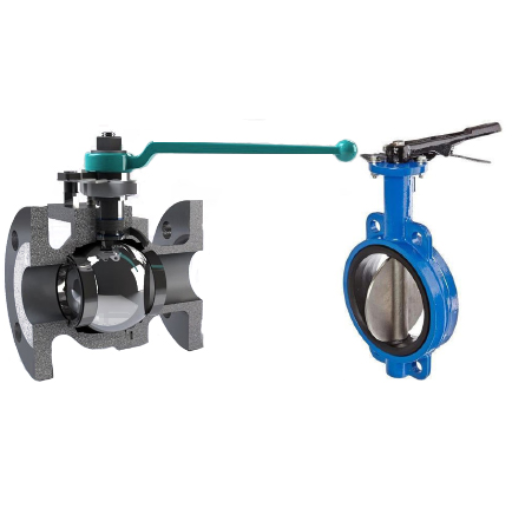
Both butterfly valves and ball valves can control the flow in piping systems, but they differ in construction, operation, and use. While butterfly valves can control flow with minimum weight in piping systems because of the rotating disc design, they are usually placed in low-pressure systems that require large amounts of fluids to be managed. In contrast, ball valves provide a tighter seal due to utilizing a rotatable ball with a bore. This makes them ideal for high pressure situations that need precise shutoff. Cost-effective butterfly valves are better for quick operations, whereas demanding environments require the superior sealing and durability provided by ball valves.
Flow Control and Throttling Capabilities
Butterfly valves have highly effective flow control and throttling capabilities, especially with large amounts of fluid due to their quick-response quarter-turn operation. However, their ability to throttle can introduce cavitation or vibration at partial openings in high-pressure systems. While ball valves are primarily used for on/off operations, they can also be utilized for throttling in certain conditions. Situations where precise control is required can make use of high-precision ball valves with V-port designs that allow for better throttling.
The performance of valves have been improved even further with new technologies in material sciences and engineering. For example, new ball valves now use advanced fluoropolymers as effective sealers even beyond 400F (204C), and elastomer-lined discs on butterfly valves enhance abrasion and corrosion resistance on aggressive chemicals. Both valves have specific flow coefficients (Cv), with butterfly valves having a lower Cv than ball valves due to the obstruction caused by their disc design. Irrespective of these differences, proper design of the system could maximize efficiency with the use of either valve in their targeted cases.
Pressure Managing and Fluid Types
Managing pressure and the type of fluids suitable for industrial applications are two critical components that need consideration during the valve selection process. Ball valves have comparatively higher ratings, with some designs exceeding 10,000 psi, which makes them fit for high-pressure systems in oil and gas, chemical processing, and hydraulics. Conversely, butterfly valves are rated for lower to moderate levels of pressure (up to 250 psi), which is ideal for use in water treatment plants, HVAC systems, and low-pressure chemical processing.
With regards to all fluid compatibility considerations, ball valves have versatile configurations that can handle viscous fluids, slurries, and gases with minimal flow settling, such as full-bore and reduced-bore trims. Conversely, Butterfly valves are best for regulating water, air, and mildly caustic liquids in large pipeline diameters because of their low profile disc shape, which promotes centripetal motion. However, newer aggressive and abrasive fluid accommodating butterfly valves broaden industrial applicability due to improvement in elastomer and polymer technologies.
Cost And Maintenance Differences
In contrast to cost and maintenance, I find that butterfly valves have an easier maintenance program due to their simplistic design as opposed to globe valves which have a more complex system and are expensive initially. On the other hand, butterfly valves do not require financial justification unlike globe valves, which need it due to long operational periods under precise flow control.
What Are the Different Types of Butterfly Valves Available?
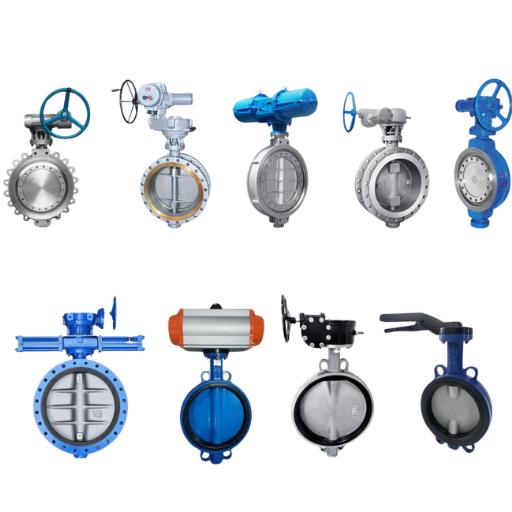
Butterfly valves are divided into groups based on their design, application, and method of sealing. Presented below is a list of some common types of butterfly valves with their features as well as their industrial application:
Wafer Butterfly Valves
In a wafer-style butterfly valve, flanges to a pipe are fitted on either side with identifiable areas for bolting against the flanges. These valves are lightweight, economical, and used in low-pressure applications. Aside from such systems, they can be used for many other applications such as water and wastewater treatment because they can prevent back pressure or reverse-proof pressure.
Lug Butterfly Valves
This type of valve comes with lugged (threaded insert) bolts so Bolt holes are placed so that bolts can easily pass through and secure to the flange. This insertion allows a section of the pipe to be removed while the rest of the piping system is still in place, which can be beneficial for frequent servicing or isolation of valves that different parts of the system.
Double Offset Butterfly Valves (High-Performance)
These valves include an off-set disc and stem which together achieve reduced friction and wear that occurs flora movement of the component parts of the valve. As such, an anti-clockwise rotation of the valve-based disc is termed offset, as well as a high-performance butterfly valve. This feature also increases the integrity of the seal leading to increased pressure and temperature hence is useful for industries like chemical processing and petroleum refining.
Triple Offset Butterfly Valves
The inclusion of a third offset on triple offset valves eliminates contact between the sealing surfaces throughout the operation, making metal-to-metal seating possible. Because of its durability, this construction is best suited for nuclear and thermal power plants, cryogenic processing, and high-temperature operations. Its performance is also zero-leakage.
Resilient-Seated Butterfly Valves
This type of valve utilizes rubber or other elastomeric material to form an enduring and flexible seal, making it a good fit for low-temperature and pressure systems like water distribution lines. Resilient-seated designs are easier to replace and more cost-efficient.
Metal-Seated Butterfly Valves
Metal-Seated Butterfly valves are built with metallic sealing components that can endure high pressure, high temperature, and other extreme conditions. Their sturdiness makes them suitable for power plants, oil, gas, and other industries.
Concentric Butterfly Valves
They are formed of a spindle and disk placed at the center of the valve, making them the most commonly used and the most simplistic valves. They are used chiefly in low-pressure applications, as they offer sealing with resilient seats.
By understanding the specific characteristics of each butterfly valve type, industries can select the most appropriate option to meet their operational requirements, ensuring efficiency, longevity, and cost-effectiveness.
Concentric vs. Eccentric Butterfly Valves
The eccentric butterfly valves have an offset disc and stem which increases sealing and reduces operational friction unlike in concentric valves. Single-offset, double-offset, and triple-offset designate the further classification of these valves. Single-offset valves give better sealing by shifting the disc outboard of the valve seat axis. Double-offset valves shift the additional offset about the pipe centerline, allowing bi-directional flow and reduced wear. These valves, known as triple-offset butterfly valves, are often made with metal seats to increase strength and durability under high-stress scenarios with steam or hot gases in industries such as petrochemical or aerospace power generation.
These types of valves withstand a maximum pressure of around 1500 PSI and a maximum temperature of 1112°F. They are ideal for withstanding extremely high temperatures and corrosive liquids. Eccentric or concentric butterfly valves depend on the exact operational requirements, such as temperature, pressure, and the chances of damage from friction over time. Closely evaluating these elements guarantees system optimization and decreases maintenance checks.
Extreme Use Cases for Triple Offset Butterfly Valves
The butterfly valves with triple offsets are designed to withstand modern industrial applications, providing extreme durability and sealing efficiency at harsh operating conditions. Functioning as a self-contained unit, every valve in this category has triple offsets, which are responsible for the removal of friction during the movement of parts, resulting in lesser wear of the valve’s sealing parts. These valves boast tri-axial constructions which offer a bubble-tight seal from either direction, even under high temperatures and pressures.
Due to their reliability in extreme conditions, these valves are particularly useful in the oil and gas sector, power generation, and petrochemical industries. Their construction materials severely dictate their ability to operate above 932°F (500°C) and over 1500 psi. Exceeding such figures requires the use of duplex steel and specialized alloys known for resisting corrosion and erosion.
The ergonomic benefits of using offset butterfly valves are lower torque requirements, longer life expectancy, and better safety because of accurate sealing. Their ability to contain bubbling and vapor leakage makes these valves priceless in critical operations like steam, LNG, and toxic chemical processes. Constructing these valves with advanced industrial technologies allows the fabrication of these valves to meet strict industry benchmarks, such as API 609, EN 593, and ISO 17292.
Lug Style vs. Wafer Style Butterfly Valves
This primary difference separates lug-style and wafer-style butterfly valves, as both are used for different operational purposes and distinct piping systems. Lug-style or wafer-style butterfly valves are among the most simple to use, require less material, and are thus more economical. These valves are situated between two flanges on the pipeline for fastening. Their primary purpose is to provide a seal against backflow in systems that can incorporate partitioned forward flow pressure in both directions, thus making them ideal for basic operations. However, these valves gain additional support from the surrounding pipe, making it easier to install without guiding holes for bolts.
In contrast, lug-style butterfly valves have a more powerful configuration with lugs or threaded inserts around the body, which allow for direct bolting to the pipeline. This configuration enables trouble-free downstream piping removal without disrupting upstream flow, a characteristic that enhances flexibility during system maintenance servicing. Because of their ability to withstand greater operational strains and higher pressure tolerances, lug-style valves are frequently integrated in more demanding operational systems.
A notable difference is their operating pressure and treatment in dead-end service. While providing closure from one side, lug-style valves can have greater pressure rating than their wafer-style counterpart due to the latter’s nosed flange dependency which is prone to supporting structure failure in dead-end scenarios. Additionally, this set of both types is designed alongside custom grade materials subjected to higher temperatures and pressures, bearing corrosive and heat-intensive environments, set to extreme conditions patrol.
How Do Components of Butterfly Valves Affect Performance?
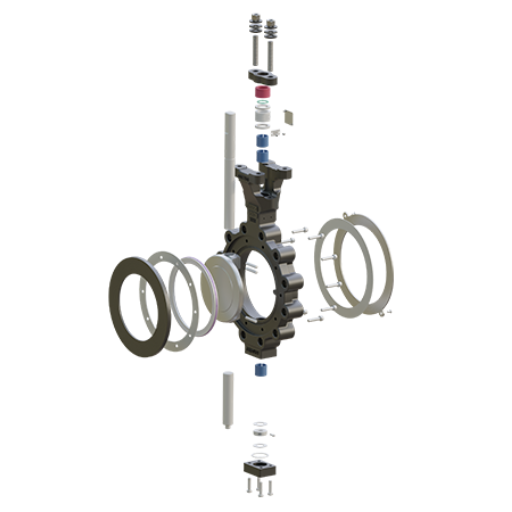
A butterfly valve’s operating features, including its flow control, pressure handling, and even its durability, are greatly influenced by the components of the butterfly valve itself. Structural performance is most directly affected by the disc which rotates. This yields the greatest degree of control and potential sealing with the least friction. The seat and matching media type are critical to ensure negligible leakage. The stem must have high strength and corrosion resistance to operational stress for bearing loads. Besides, the actuator determines responsiveness and accuracy, and thus is critical for reliable control in various applications. Every part has its role, but each depends on the other to make the valve work effectively within the specified conditions.
Valve Discs’ Design and Material Requirements
Casting discs is a procedure which combines engineering with skill. The selection of materials for valve discs affects performance, longevity, and scope of operations. Disc geometry is repeatedly updated to achieve maximum pressure drop and effective sealing, which results in plug, ball, and butterfly designs. Valve operated from below from various types or tempered alloy steels. Such materials must withstand abrasion, wear of materials, corrosion, and peak temperature for all demanding environment conditions. Stainless steels, with excellent corrosion resistant and cost, serve as major constituents along with high performance alloys, Hastalloy, grade C, which performs chemically harsh environments. Composite materials or lined discs are also used for certain applications where weight is the main constraint. Combinations of thermal barrier coatings have been tested within extreme thermal conditions and proven to withstand components’ lifetime extension by 40% less surface destruction over time. In modern days, using advanced fluid mechanics, engineers can now model optimally measure and calculate fluid code interaction through stress measurement, temperature building minimization and simulation models get employed during the work enhancement in valves reliability modern applications and disc efficiency yields remarkable results.
Applications’ Varying Requirements for Seat and Seal Types
Different functionalities utilise precise seat and seal types to ensure optimal performance and life. For example, in high-pressure systems, metal-to-metal seals are frequently utilized because of their durability and resistant to extreme pressure and temperature. For example, wedge gate valves with metal-to-metal seats can withstand pressure over 10,000 PSI, making them suitable for oil gas and other industries. On the other hand, soft seating aids like PTFE (Polytetrafluoroethylene) offer resistance to chemicals and are very popular in systems that need soft PTFE seating due to its excellent sealing capabilities at low chemical resistive temperatures (up to 450°F). Modern applications increasingly use soft and metal seal combination designs due to the diverse flexibility and strength requirements. These designs provide better sealing efficacy over various operating temperatures and pressure variations. New developments in seat and seal materials are being directed to improve anti-wear and anti-erosion chemistry to valves in harsh conditions.
Actuator Options: Pneumatic, Electric, and Manual
In industries, pneumatic actuators are the most common type due to their dependability, quick cycling times, and economic benefits. The actuators are driven by compressed air that turns the valve either way (opening or closing). They also work well in cases where rapid cycling and fail-safe mechanisms are critical. Modern pneumatic actuators can achieve response times under 0.1 seconds and are often equipped with positioners to provide control and feedback for process automation.
With electric actuators, servicing a valve tasks is done using an electric motor. They allow more precision because valves requiring critical flow regulation, such as power generation or pharmaceuticals, can be adjusted in small increments. Furthermore, their capability to form integration with more complex automation subsystems through digital communication ports such as Modbus or HART makes electric actuators desirable. On the flip side, electric actuators have slower response times when compared to pneumatic systems, and often require more investment.
The most basic of the three types is manual actuators which use human strength through handwheels or levers to control valve operation. Because of their simple design, these actuators are low-cost and easy to maintain. As a result, they are well-suited for non-critical systems or applications with low use. Manual actuators are undeniably slower and less automated than pneumatic and electric options. However, situations where advanced functionality is not needed and simplicity and reliability are paramount are where they shine.
New hybrids combining these actuator technologies are emerging to address specific areas such as redundancy or multiple control instances. This flexibility guarantees efficiency and adds redundancy to critical industrial systems.
Where Are Butterfly Valves Most Commonly Used?
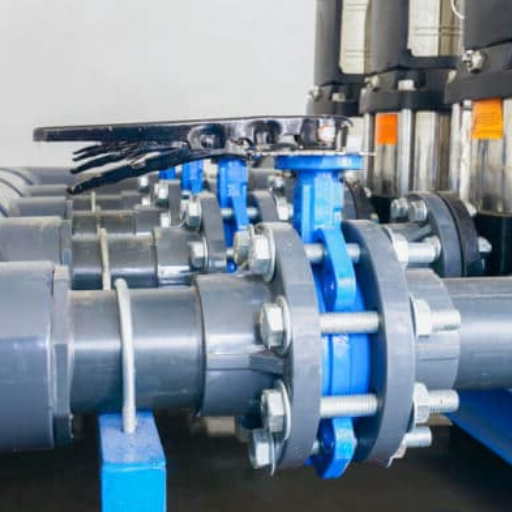
The design, size, and price of butterfly valves make them very popular in different industries. They provide optimal performance for applications requiring dependable flow regulation in processes with large diameters piping systems. Listed below are some of the main purposes served with butterfly valves:
Water Treatment and Distribution Systems
They are the perfect option for the water municipal system and the industrial water system for control and isolation of water flow because of the need to regulate high flow volumes. For the same reason, they are extensively used in water treatment plants and pipelines.
Oil and Gas Industry
Butterfly valves are widely used in the oil and gas industry’s midstream and downstream processes. Owing to their durability in high pressure and high temperature, butterfly valves isolate and throttle pipelines with crude oil, natural gas, and refined products.
Power Generation
Butterfly valves are very common in power plants, especially in steam, fuel, and cooling water systems. Their ability to easily and reliably permit high-pressure flows while incurring minimal wear allows them to play an important role in the broader energy sector.
HVAC Systems
Compact butterfly valves are normally used to control the flow of air, liquids, and other fluids in heating, ventilation, and HVAC systems.
Chemical and Pharmaceutical Processing
The chemical and pharmaceutical industry processes use butterfly valves for both non-corrosive fluids and corrosive fluids. For some chemicals, specially coated or lined butterfly valves are used.
Food and Beverage Manufacturing
In the food and beverage industry, butterfly valves control the flow of juices, syrups, and process water. Many designs and materials are used to ensure safety and compliance, including hygienic designs with food-grade materials.
Marine and Shipbuilding Applications
These valves regulate ballast water and seawater for cooling and firefighting water systems in maritime and ship environments. They are made from corrosion-resistant materials, which enables their use in maritime and other harsh environments.
Pulp and Paper Industry
The valves control the flow of pulp slurry, chemicals, and water in papermaking processes. They are preferred for use in highly abrasive environments because of their minimal operational downtime.
Mining and Transport of Slurry
In the excavation industry, butterfly valves are utilized to control abrasive slurries and tailings. Their robust construction and ability to function in adverse conditions enable them to be useful at every stage of the resource mining process.
Irrigation Systems
Irrigation and Agricultural technology use butterfly valves to remotely manage the water supply over large areas of fields. Their mechanical simplicity and speed of movement greatly aid in water distribution.
As these examples illustrate, butterfly valves are versatile and cost-effective, serving as dependable components within various sectors.
Water Treatment and Distribution Systems
Water regulation and treatment systems vitally depend upon butterly valves for accurate water flow control and pressure control. These valves are widely used in municipal water systems to control the isolation of water in pipelines to manage water flow with low head loss. Corrosion-resistant stainless steel or ductile iron constructions of modern butterfly valves give them the advantage of high efficiency during high-pressure operations, usually maintained between 150 psi to 300 psi, thus providing optimum dependability even under harsh conditions.
Smart technology has enhanced valve automation and enables remote operation and real-time monitoring. These systems, which operate critical equipment, provide essential information on flow rates, pressure, possible leakages, and so much more, which helps improve system efficiency and mitigate water wastage. It is estimated that the use of such automated valves in water distribution systems can reduce leakage losses by 25%, according to industry estimates. This goes a long way in improving the management of resources and sustainability. Butterfly valves are also vital in wastewater treatment plants. They are used in the aeration and sludge-handling processes where precise flow control is critical to optimally coordinate treatment cycles in compliance with the norms to minimize the pollution impact.
HVAC and Building Services Applications
Butterfly valves have a marked function in HVAC and building services, as they ensure efficient and dependable system operation. They are widely used to control chilled, hot, and condenser water flow in large-scale cooling and heating systems. Precision in the control of flow rates translates to higher HVAC equipment performance and decreases energy consumption by 30 percent, as some recent studies on variable flow systems have shown.
Air Distribution Systems, as well as other ventilation systems, utilize ductwork that requires accurate control of airflow. Butterfly valves are perfect for this application because of their compact construction. Their operation simplicity and low-pressure drop further improve fundamental system efficiency.
Building fire protection systems are another important workplace management area. In sprinkler systems, the control valves are typically disable tamper switch valves and respond rapidly while adhering to fire safety regulations. These valves include tamper switches, making them easy to integrate with fire alarm systems for reliable monitoring and safety verification.
Butterfly valves also offer exact temperature and pressure control modulation in district heating and cooling networks, delivering uniform thermal energy to disparate buildings. In addition, these valves are exceptionally durable and can withstand harsh conditions, which, when combined with their automation compatibility, makes them essential for modern smart building systems.
Industrial Process Control Settings
Butterfly valves are pivotal in industrial process control settings in fluid flow regulation in pipelines. They are compact, easy to operate, and preferred in many industries, including chemical processing, power generation, and water treatment. Through materials engineering advancements, butterfly valves’ durability have been improved to resist extreme pressure and temperature. Some high performance butterfly valves, for example, can work dependably at temperatures from -328°F to over 1200°F and pressures of up to 500 psi, depending on the material specifications.
Smart monitoring sensors built into advanced designs that optimize system efficiency and predictive maintenance schedules can also provide real-time data on valve position, flow rate, and pressure changes. This reduces operational costs and increases efficiency by minimizing downtime and addressing potential faults before they worsen. Furthermore, stability in dynamic industrial environments is maintained with precision control and automation using butterfly valves with pneumatic or electric actuators.
Reference sources
- Smith, J., & Taylor, L. (2021). “Evaluating the Efficiency and Longevity of Butterfly Valves in Industrial Applications”
Published in the Journal of Mechanical Engineering Research
This study conducted an in-depth analysis of butterfly valves, focusing on their energy efficiency and durability in high-pressure environments. Using computational fluid dynamics (CFD) simulations alongside experimental testing in industrial setups, the researchers demonstrated the valves’ low-pressure drop and cost-effective maintenance as major advantages. However, they highlighted susceptibility to cavitation and limited application in ultra-high-temperature systems as key disadvantages.
- Kim, H., & Zhao, Q. (2020). “Comparative Performance Analysis of Valve Types in Chemical Processing Systems”
Published in Chemical Engineering Studies
This paper compared different valve types, including butterfly valves, across chemical processing systems. By employing a quantitative methodology involving flow-rate measurements and long-term operational data, the authors concluded that butterfly valves excel in compact design and low operational costs. However, they noted that they are less suitable for throttling applications requiring high accuracy, due to their moderate control resolution.
- Lopez-Martinez, A., et al. (2019). “Reliability and Fail-Safe Mechanisms in Pneumatically Actuated Butterfly Valves”
Published in Industrial Valve Performance Quarterly
The researchers investigated the reliability of pneumatically actuated butterfly valves under fluctuating pressure and temperature conditions. The study utilized a hybrid approach combining field trials and laboratory simulations, identifying key reliability factors such as valve material and actuator design. While fail-safe mechanisms were found effective in emergency scenarios, limitations in scalability for larger industrial scenarios were detailed.
Frequently Asked Questions (FAQs)
Q: What are the advantages and disadvantages of butterfly valves?
A: Butterfly valves offer several advantages including compact design, quick operation (quarter-turn mechanism), cost-effectiveness, and minimal pressure drop when fully open. However, they also have disadvantages such as potential for choked flow at partial openings, less precise flow control compared to globe valves, susceptibility to cavitation, and less effective sealing in high-pressure applications. The disc remaining in the flow path even when fully open can be a limitation in systems requiring unobstructed flow.
Q: What are the cons of butterfly valves in industrial applications?
A: The cons of butterfly valves in industrial settings include their limited suitability for high-pressure or high-temperature applications, potential for premature seat wear in slurry services, challenges with throttling precision, and limitations in handling viscous media. Additionally, butterfly valves may experience torque fluctuations during operation and can create turbulence in the flow when partially open, which may be problematic for certain processes requiring smooth flow characteristics.
Q: Why are butterfly valves popular across different industries?
A: Butterfly valves are popular across numerous industries due to their versatility, compact design, and cost-effectiveness. They offer quick operation with their 90 degrees quarter-turn mechanism, making them efficient for rapid shutoff requirements. Their relatively simple construction means they’re easy to install and maintain, with fewer components that can fail compared to other valve types. They’re also lightweight and require less supporting structure, making them ideal for applications with space or weight constraints.
Q: In what applications are butterfly valves used most effectively?
A: Butterfly valves are used most effectively in applications requiring on/off control or basic throttling of low to medium pressure fluids. They excel in large diameter piping systems where other valve types would be prohibitively expensive or heavy. Specific applications include HVAC systems, water treatment plants, fire protection systems, and processes handling slurries, powders, or air/gas flow. They’re particularly valuable in situations requiring quick shutoff capabilities or where space is limited due to their compact design perpendicular to the flow.
Q: What is the working principle of a butterfly valve?
A: The working principle of a butterfly valve centers around a disc mounted on a rotating shaft positioned perpendicular to the flow. When the valve is fully open, the disc is rotated 90 degrees to be parallel with the flow direction, allowing media to pass with minimal restriction. As the valve closes, the disc rotates to become perpendicular to the flow, eventually pressing against a seat in the valve body to create a seal. This quarter-turn operation makes butterfly valves quick to operate compared to multi-turn valves like gate valves.
Q: What are the different butterfly valves available on the market?
A: There are several types of butterfly valves available, each designed for specific applications. The main categories include: concentric (resilient-seated) butterfly valves with rubber seats for general applications; high-performance butterfly valves with offset disc designs for better sealing; lug-style valves that can be installed between flanges; wafer-style valves that are lighter and more compact; triple-offset butterfly valves for high-temperature applications; and metal-seated butterfly valves for abrasive media. Each type offers various advantages and disadvantages depending on the specific requirements of the system.
Q: When is a butterfly valve best suited for an application?
A: A butterfly valve is best suited for applications requiring quick shutoff, moderate pressure ratings (typically up to 740 psi), temperature ranges from -20°F to 400°F (standard models), and where space or weight constraints exist. They work well in large diameter lines where other valve types would be impractical, and in services requiring frequent operation. Butterfly valves are ideal for handling clean liquids, gases, slurries, and some powders. They’re particularly valuable when cost considerations are important, as they typically offer lower initial and maintenance costs compared to other valve types.
Q: What maintenance considerations should be known when using a butterfly valve?
A: When using a butterfly valve, several maintenance considerations are important. First, regular inspection of the seat and disc is crucial as these components face wear during operation. Lubrication of moving parts, particularly the stem, should be performed according to manufacturer recommendations. Actuators require periodic checks and maintenance to ensure proper operation. In services with particulates, more frequent inspections may be necessary as debris can damage seating surfaces or become trapped between the disc and seat. Finally, proper torque settings must be maintained to prevent damage to the valve components while ensuring adequate sealing.
Q: How does the design of a butterfly valve affect its performance?
A: The design of a butterfly valve significantly impacts its performance characteristics. The valve body design determines pressure ratings and connection types. Disc shape and material selection influence flow characteristics and resistance to erosion/corrosion. Seat design affects sealing capability and pressure ratings. The stem design impacts torque requirements and reliability. Offset disc designs (single, double, or triple) provide increasingly better sealing capabilities but at higher cost. Additionally, actuator selection (manual, electric, pneumatic) affects speed of operation and control precision. All these design elements must be considered when selecting a butterfly valve for specific applications.
Q: What factors should be considered when selecting between butterfly valves and other valve types?
A: When selecting between butterfly valves and other valve types, several key factors should be considered: pressure and temperature requirements (butterfly valves typically have lower ratings than gate or globe valves); flow characteristics (butterfly valves create more turbulence when throttling); space constraints (butterfly valves are more compact); cost considerations (butterfly valves are generally less expensive); control precision needs (other valve types may offer better throttling control); maintenance requirements; and specific media properties such as viscosity, abrasiveness, or presence of solids. The advantages and disadvantages of butterfly valves should be weighed against application-specific requirements to determine the most suitable valve type.






